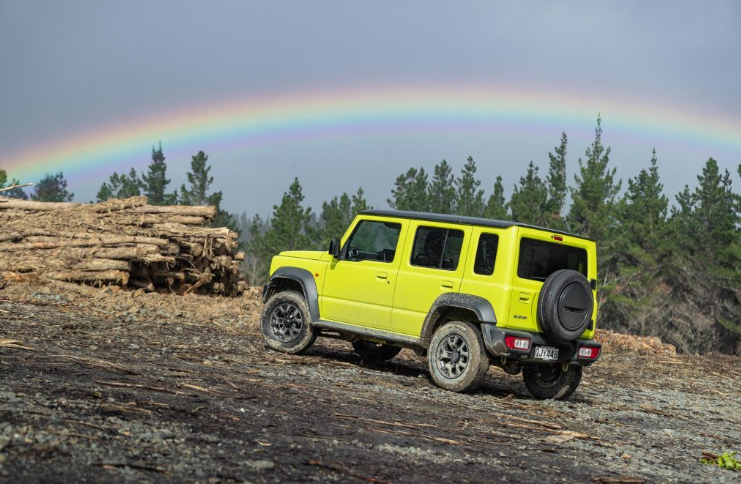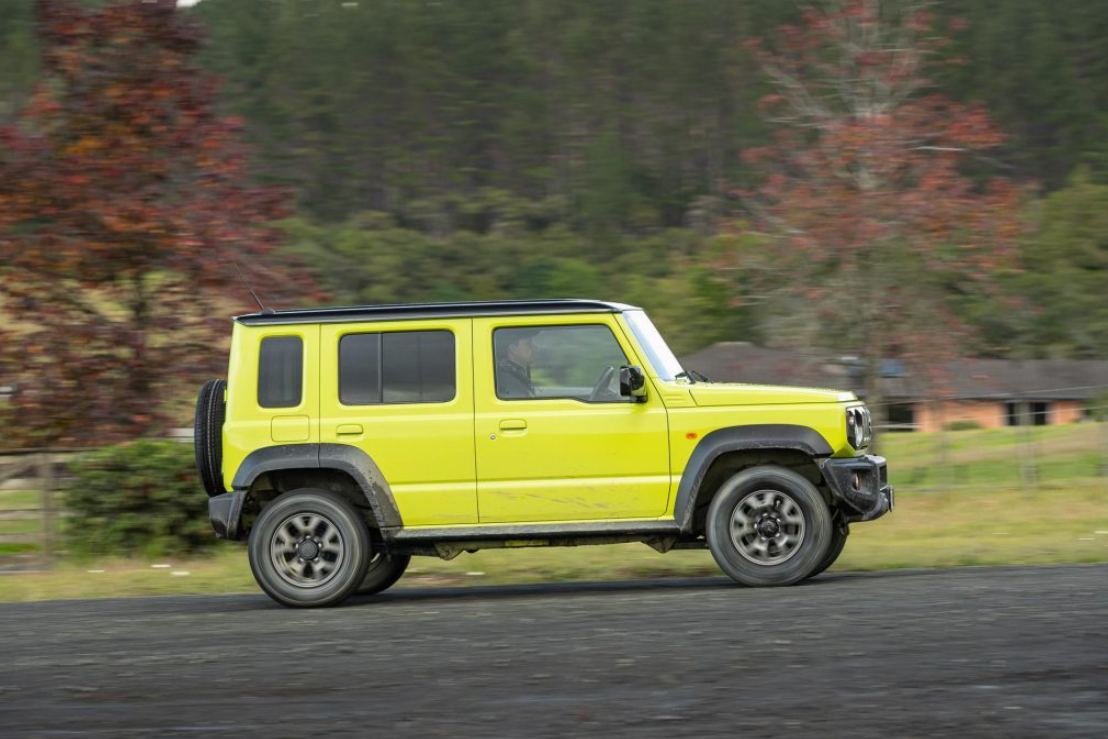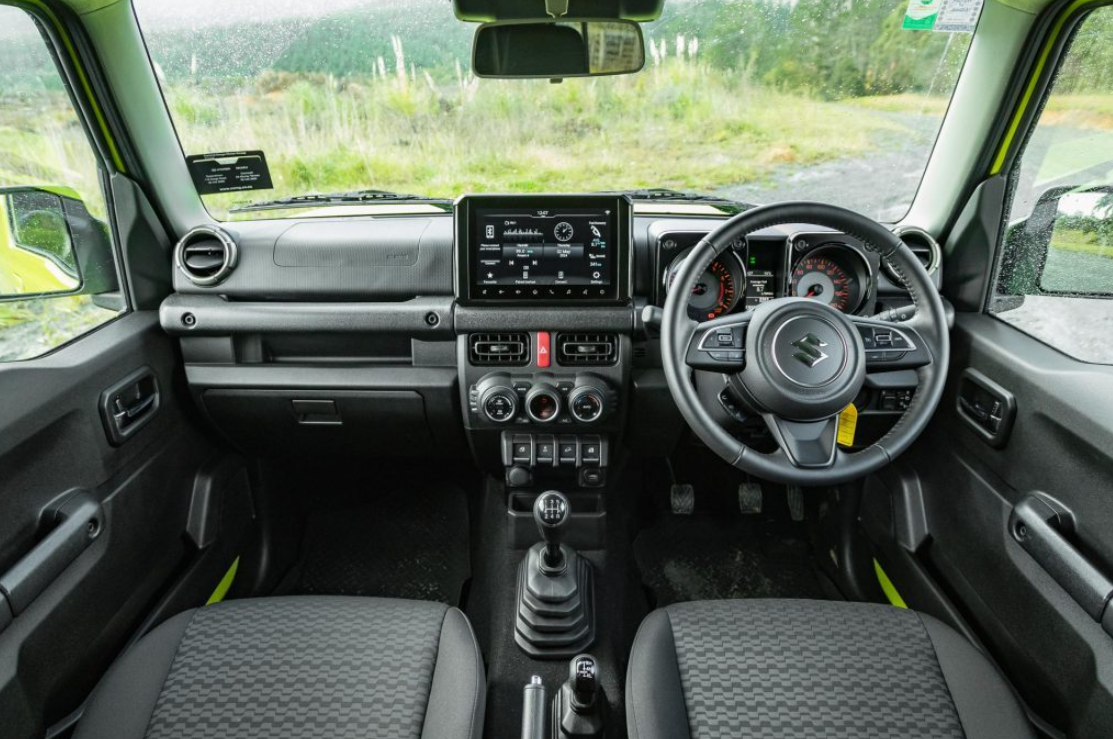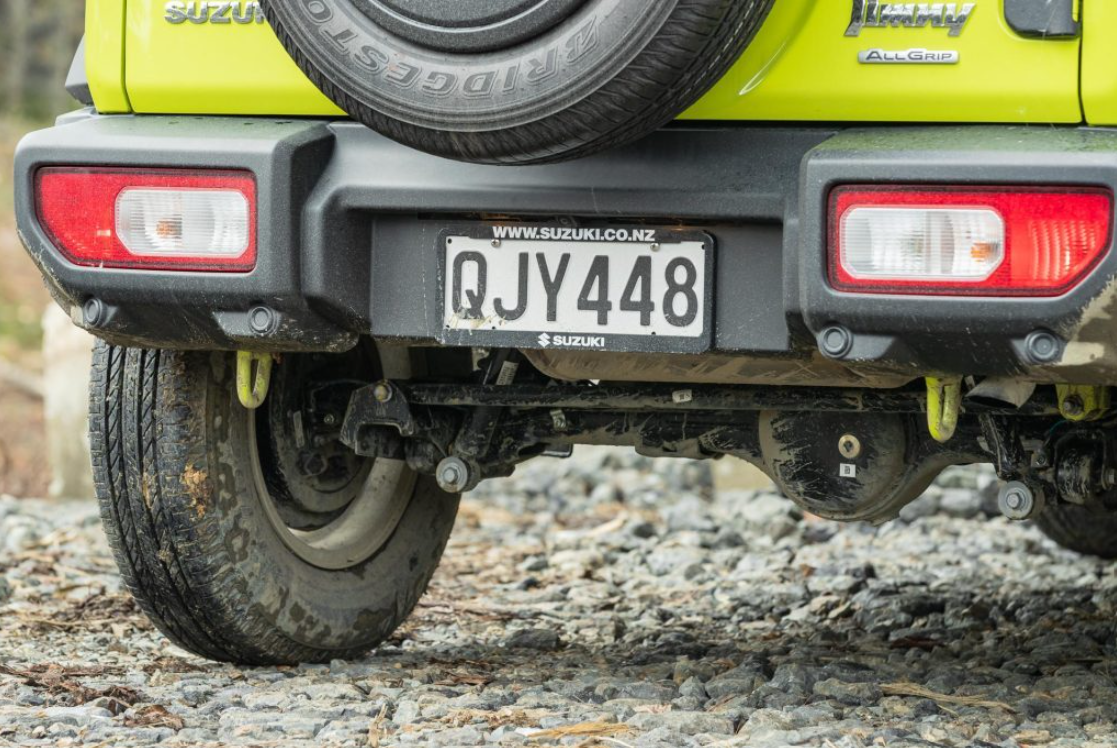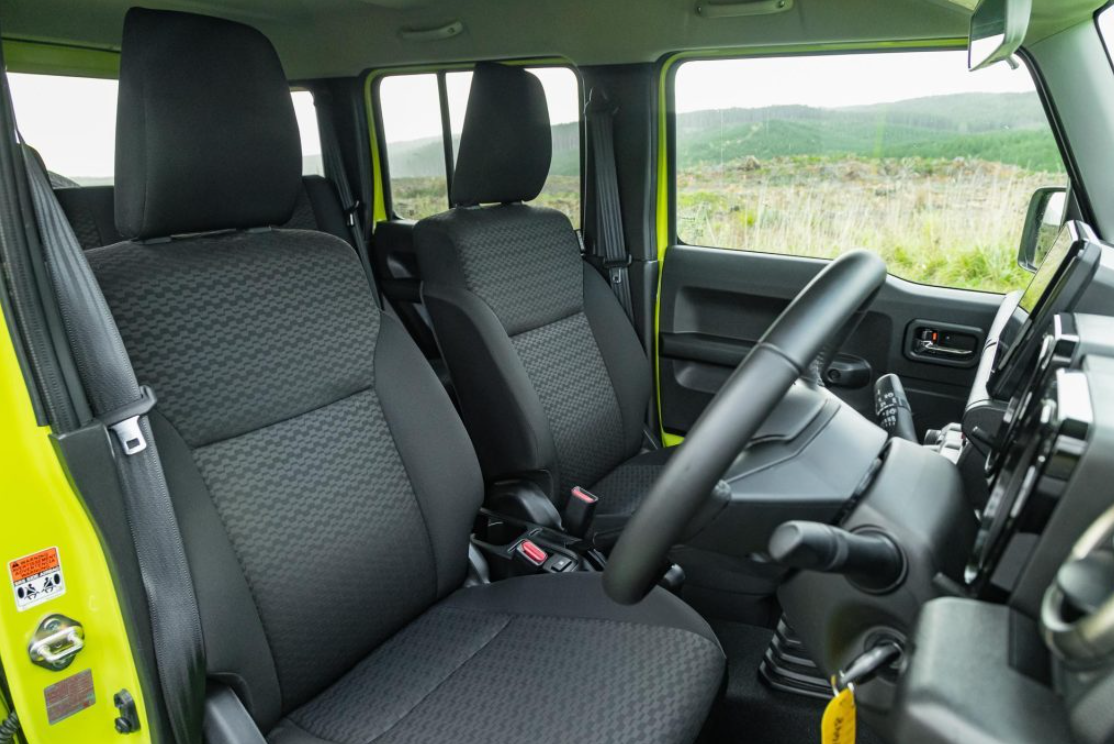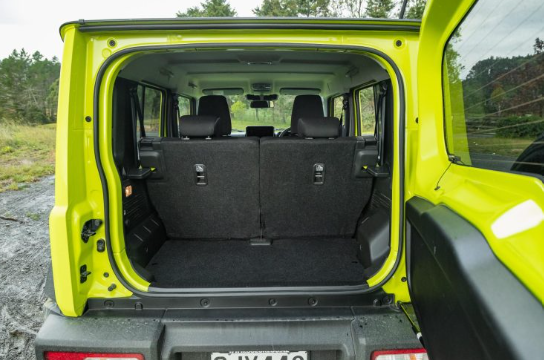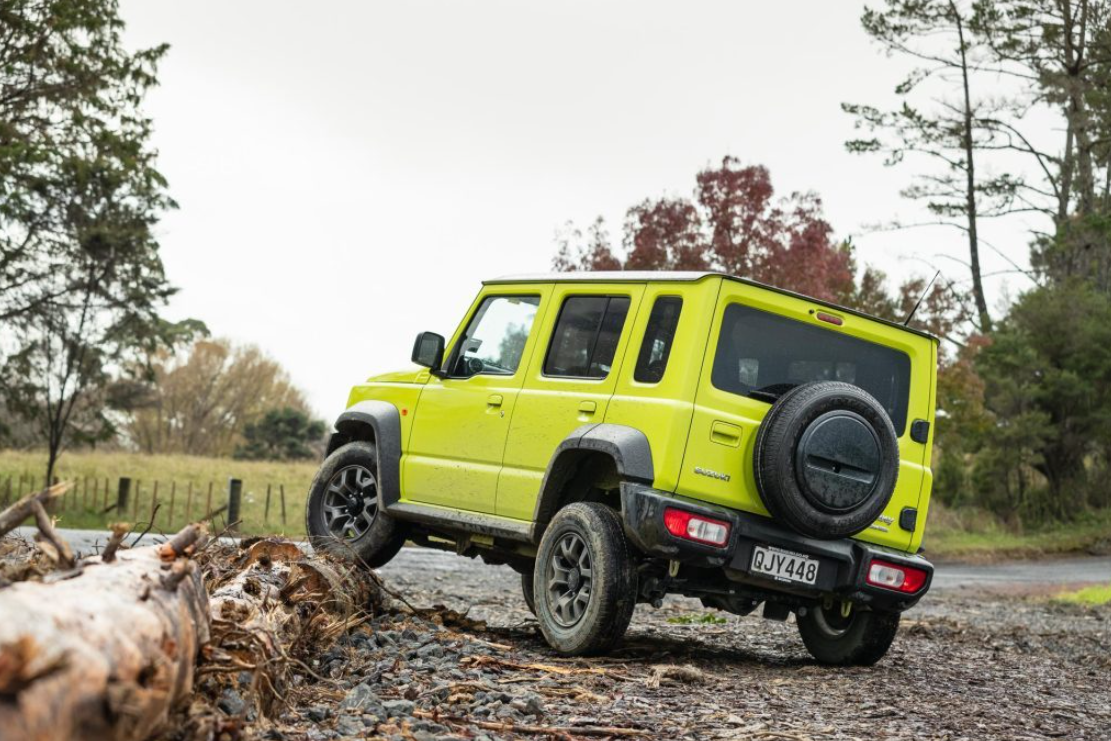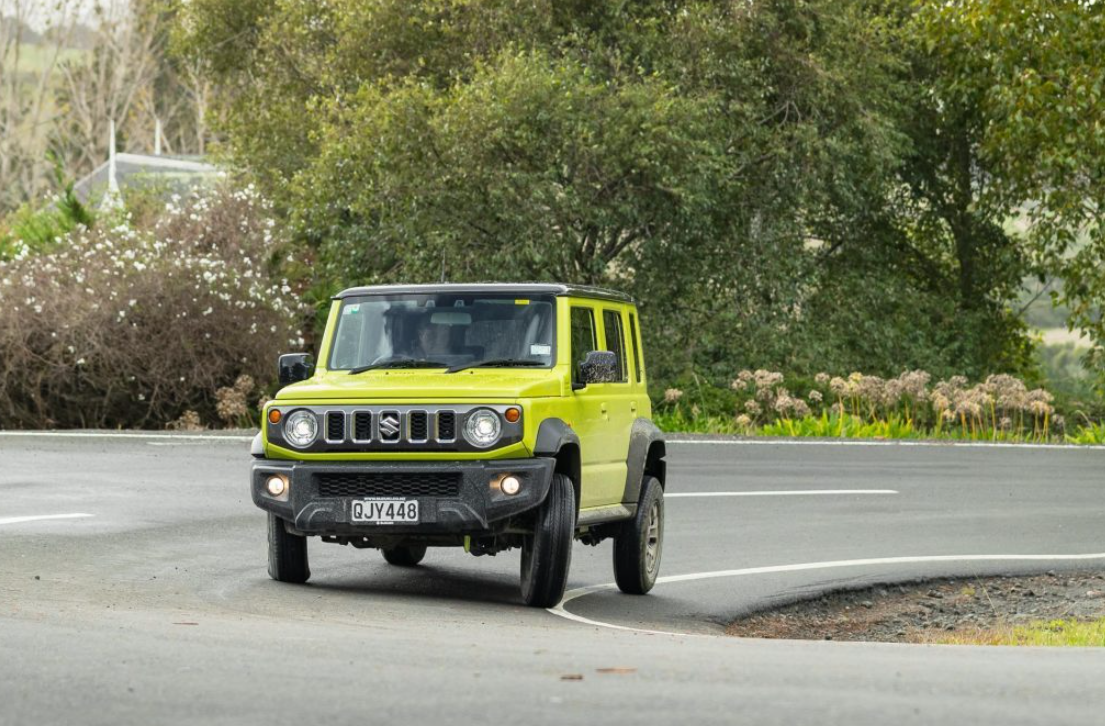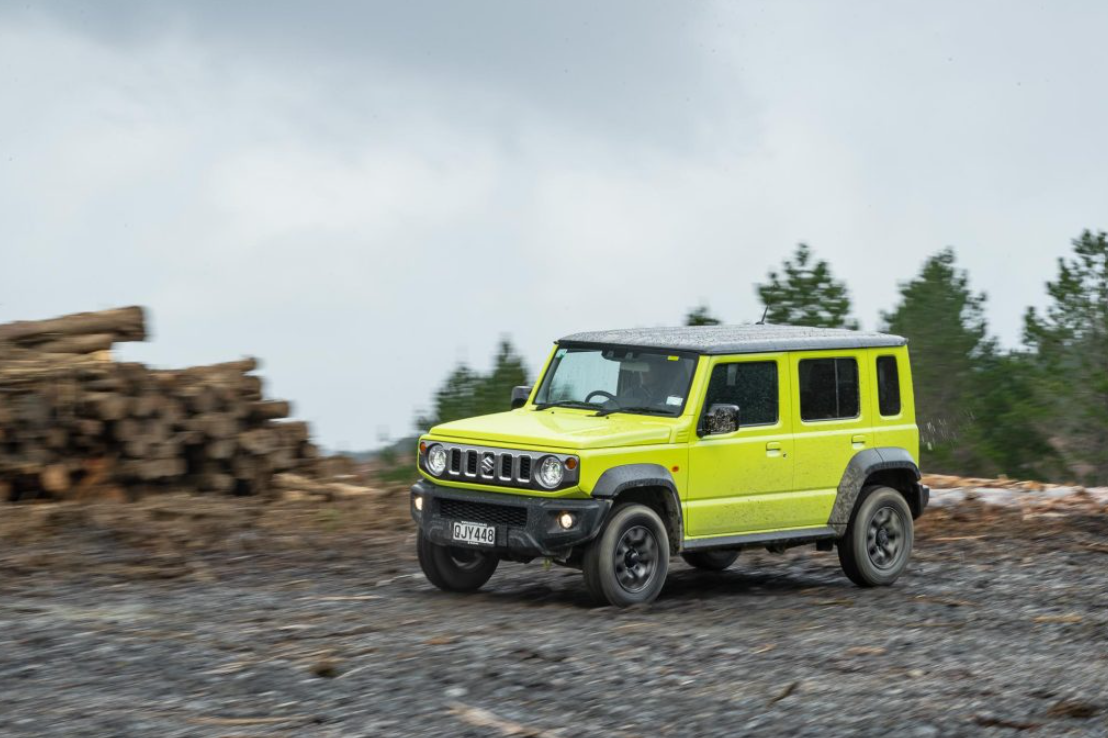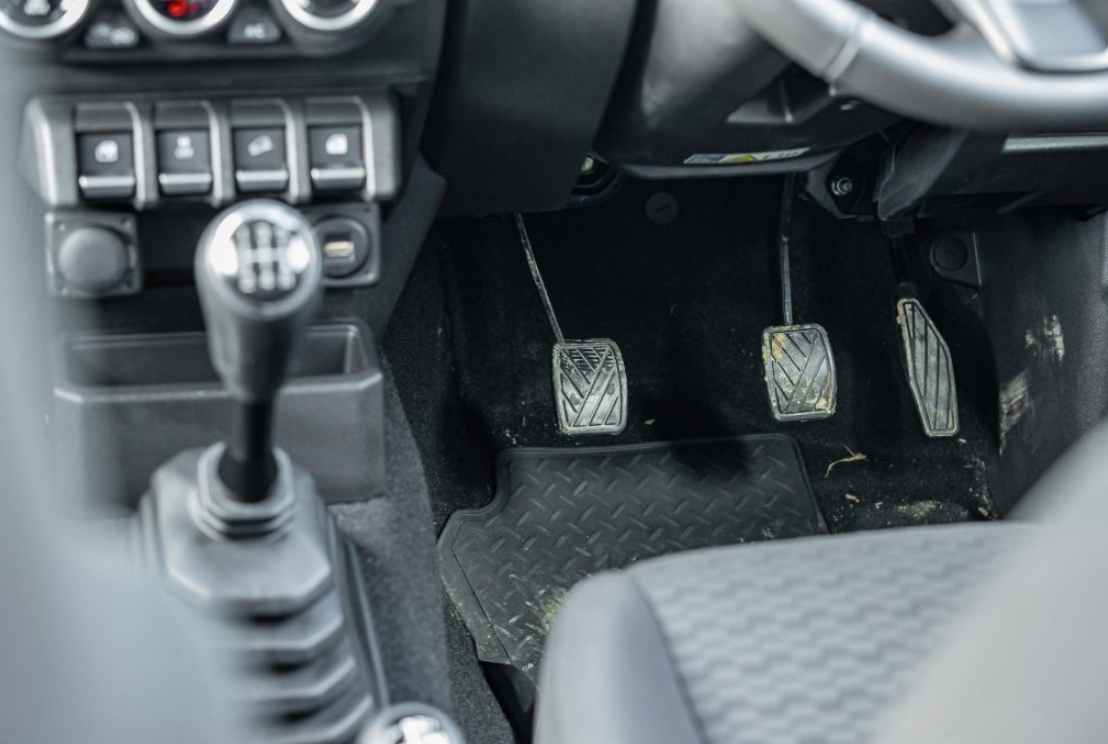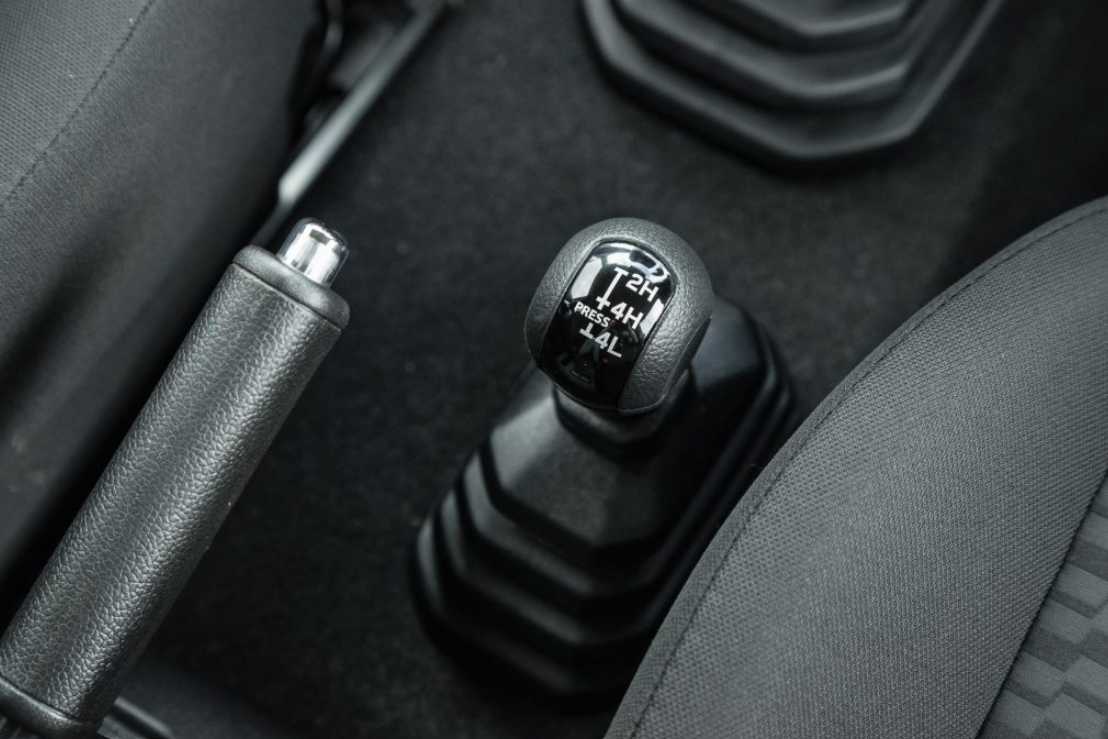2024 Suzuki Jimny 5-door review
Suzuki has lengthened its little Jimny, adding a pair of rear doors and more interior space.

Suzuki has lengthened its little Jimny, adding a pair of rear doors and more interior space. But does it still charm like the three-door?
A few months back, we found ourselves on an off-road adventure, loaded into a friend’s ‘bush pig’.
They are blessed to be living in the Taupo region, so it only took 15 minutes for us to be out amongst some interesting forestry tracks and bashing through the great outdoors.
There were other enthusiasts out and about in their ‘overlanders’, massive 4x4s decked out with all manner of accessories.
While there were well-formed trails about, everyone was keen to blast through the big mud holes and fire themselves skyward up steep inclines leading to nowhere, such is the nature of the off road buffs.
Among the oversized utes and lifted Cruisers were a couple of little Jimnys. Sporting the least amount of aftermarket equipment, they made a mockery of all the big rigs by doing everything they could for a fraction of the outlay.
And that is the Jimny’s forte; being out in the wilds and doing its thing in the rough.
Up until recently, this sort of play has largely been a two-up affair for Jimny owners, given there wasn’t much room in the back of the three-door for passengers. But now they can take others on adventures with the introduction of the five-door model.
This adds to the Jimny range which starts with the Carry, an entry-level model that deletes the rear seats altogether in favour of a flat load area out the back.
This manual-only model, riding on steel wheels, is $32,500, while the Sierra is $35,990 for the manual, rising up to $39,500 for the two-tone auto.
Jimny pricing has increased since the new model was introduced. When we first drove the three-door, it was a genuine bargain with the Sierra manual being $25,990 and the auto $27,500.
That now makes Jimny a bit harder to love, yet it still sells well.
The five-door variant, with its extra room for passengers and additional boot space should hike sales further, starting at $40,990 for the manual and rising up to $45,500 for the auto with the two-tone paint job (a black roof essentially).
Jimny is one of few remaining vehicles with a manual trans option, sales split 50/50 between the gearbox options.
Still a Jimny, just bigger
All Jimny aspects remain intact; the separate ladder chassis, solid axles front and rear and a switchable four-wheel drive transmission, complete with a low-ratio transfer case.
The difference is the 340mm lengthening of the wheelbase that allows two extra doors to be fitted. And for the rear passengers to be afforded some legroom.
Where the three-door Jimny has virtually no boot space when the back seats are in use, the five-door offers a capacity of 211L.
Okay, not much in the grand scheme of things, but it turns the Jimny into something you can at least call practical.
Access to the rear is reasonable, and there’s surprisingly good leg room on offer once seated; not oodles but more than you might expect.
There are still only two seat belts in the rear, as the five-door is no wider.
The boot is accessed via the side-hinged tailgate and, while not cavernous, you’ll be able to fit a couple of bags/off roading paraphernalia back there. While these fold down, they do not form a flat load area when stowed.
The interior is a utilitarian affair with lots of hard wearing plastic and exposed metal. That makes it easier to wipe all the muck off after a weekend exploring, we guess.
Jimny has gained a reversing camera since we last drove it, which is good as there’s never been much of a rearward view.
The customisable nine-inch infotainment screen is a decent update on the old one for it displays more info.
However, in-built sat nav is no longer part of the deal. Still, hooking up your phone isn’t hard with Bluetooth, Wi-Fi and USB connections, along with Android Auto and wireless Apple CarPlay.
Jimny has a forward facing camera to enable collision warning, automatic braking and lane departure warning.
And if you buy the auto, you get adaptive cruise control too; the manual only gets the old fashioned sort. There are six airbags and rear parking sensors but still no crash rating.
At best off road
The off-road specs are similar to the three-door with the same 210mm of ground clearance while the departure, rampover and approach angles are 47, 24 and 36 degrees, respectively.
Those are all slightly inferior to those of the three-door, particularly the rampover number which is four degrees less, the longer wheelbase to blame. That wheelbase stretch is also responsible for the increase in the turning circle, which grows from 9.8 to 11.4m.
And that’s not great for a vehicle that is still under 4m in length. That’s probably the biggest drawback of the extended wheelbase as the two-door is exceptionally nimble off road.
However, the other off-road traits are still applicable here; stick your head out the side window and you can see just where the wheels front and back are tracking.
It’s still a narrow machine, so sneaks along skinny trails and it’s still a relative lightweight, which also has its advantages off road.
In 2H this is a rear driver, 4H is selected easily on the fly while 4L is in reserve for the tricky bits. Helpers include a hill holder and hill descent control, the latter applying the brakes to maintain traction downhill.
While there’s no locking rear diff, Jimny uses the brakes on each wheel to clamp spinning wheels, giving more traction to the one on the other end of the axle.
On gravel, you want to be in 4H as the traction control can get flustered in the loose. Jimny doesn’t bomb down metal trails like a big ute will however, and decent corrugations can shake it up.
But it’s more about the destination and off road trails than the journey to them. It’s not too keen on being pushed along on sealed roads, while the Dueler rubber doesn’t inspire too much confidence in the rain.
On dry roads it’s better, though you can still expect it to push through tighter turns. The steering is sleepy off centre, isolating the feel but still managing to kick back in the bumpy bends.
Jimny is a compromise on road as its primary purpose is to go hard off it.
Power play
There’s no change to the power unit, Suzuki still using the 1462cc naturally aspirated four that musters 75kW at 6000rpm with 130Nm at 4000rpm.
This goes okay in the three-door, but here it has another 105kg to haul around. And while you can better accommodate more people and their things, the 1.5 sure has its work cut out when loaded.
It was never a grunty warhorse and here you need to drop a gear, sometimes two, if you want it to accelerate with any meaning. The torque is MIA below 2000rpm while it feels better around the 3000rpm mark and beyond.
As such, the consumption can range higher than the listed 7.1L/100km figure, our average being 8.8L/100km. Still not bad in the scheme of 4×4 SUVs.
The manual change is slick and positive (for a 4×4), the clutch is lightweight too, though could do with a more defined bite point. There’s a hill holder for added convenience.
Those wanting a more relaxed drive could opt for the locally devised turbo Suzuki Jimny conversion via CTB Performance. This boosts the power of the 1.5 to 120kW while torque improves to 230Nm.
The kit includes a front-mounted intercooler, a dyno tune, and low vehicle certification. CTB will cover the drivetrain for three years/100,000km.
The firm also claims improved fuel consumption due to the torque delivery. However it’s not cheap at $12,500.
Not amazing in the city
While its recirculating ball steering is robust, taking the knocks in the ruts off road, it’s slow geared with more than four turns lock-to-lock.
This is also good off-road, the steering wheel not kicking back through the rough but it means lots of wheel twirling when commuting and parking.
While it is power assisted, the steering gets a bit heavy when you’re trying to about face, a task not helped by the large turning circle. But you can take advantage of its rugged underpinnings and mount the curb easily if you can’t quite make it around in one swing.
The ride is okay given the nature of the chassis, with a bit of shimmy and wobble over the bigger bumps. There are a few driveline vibrations to contend with too.
While it is power assisted, the steering gets a bit heavy when you’re trying to about face, a task not helped by the large turning circle. But you can take advantage of its rugged underpinnings and mount the curb easily if you can’t quite make it around in one swing.
The ride is okay given the nature of the chassis, with a bit of shimmy and wobble over the bigger bumps. There are a few driveline vibrations to contend with too.
Worth the extra for the extras?
The five-door certainly makes Jimny more appealing for those with extra bods to cart around; it really isn’t fun getting kids in and out of a three-door machine.
And the boot space is a real plus. But it comes with trade offs, particularly the added mass and bigger turning circle.
While the additions aid practicality, the five-door isn’t as cheeky looking as the wee three-door, which we reckon remains one of the Jimny’s key traits.
Car Details
Model
Suzuki Jimny 5-Door
Price
$41,500
Engine
1462cc / IL4 / EFI
Power
75kW@6000rpm
Torque
130Nm@4000rpm
Drivetrain
5-speed manual / Switchable 4×4
Fuel Use
7.1L/100km
C02 Output
165g/km
0-100km/h
13.1sec
Turning circle
11.4m
Wheelbase
2590mm
Stability systems
ABS, ESP
Safety
AEB, LDW
Luggage Capacity
211-332L
Tow rating
500kg (1300kg braked)
Fuel Capacity
40L
Service intervals
12 months/15,000 km
Warranty
3 years/100,000km
ANCAP rating
Not rated
Weight
1200kg (claimed)
This article was originally published on autocar.co.nz
Also consider
